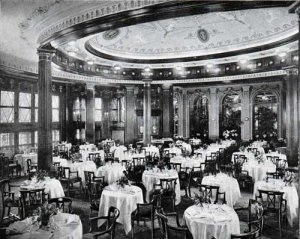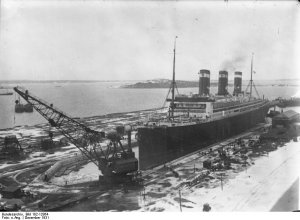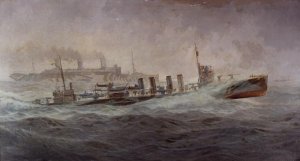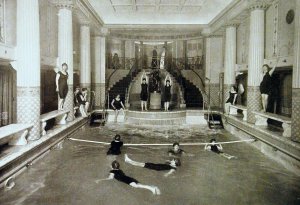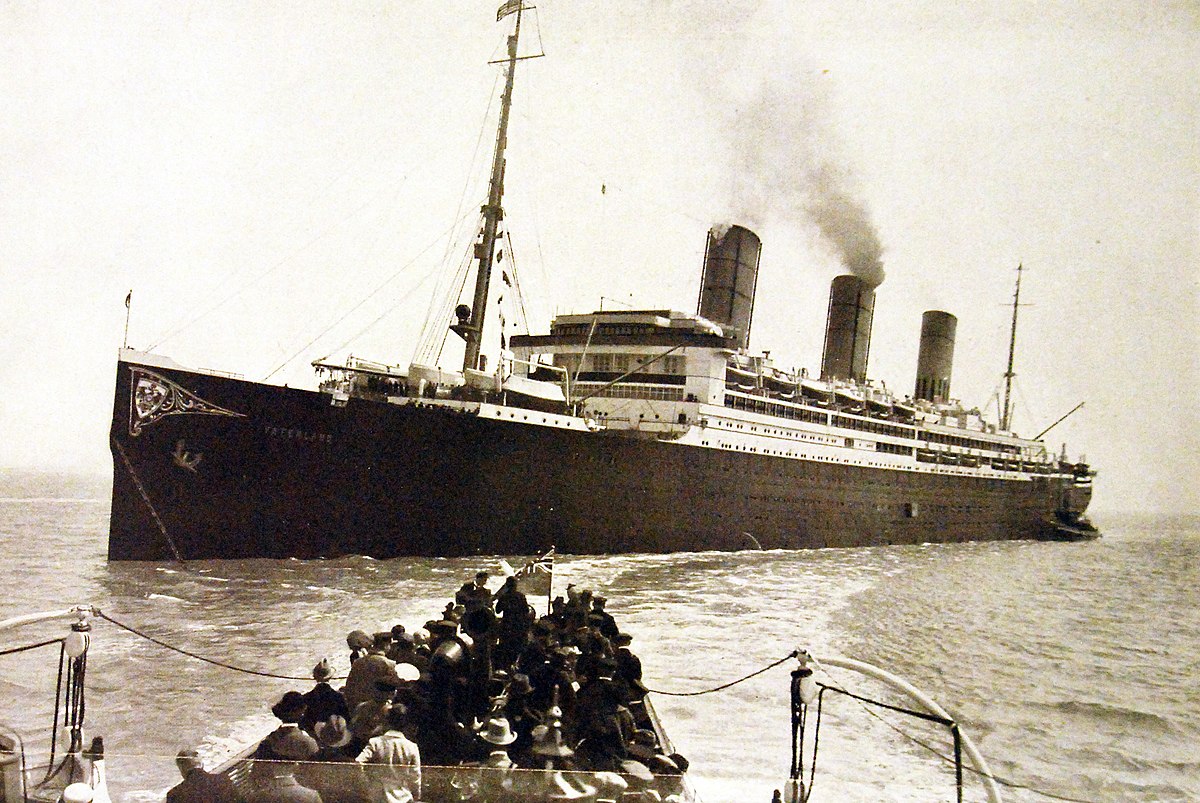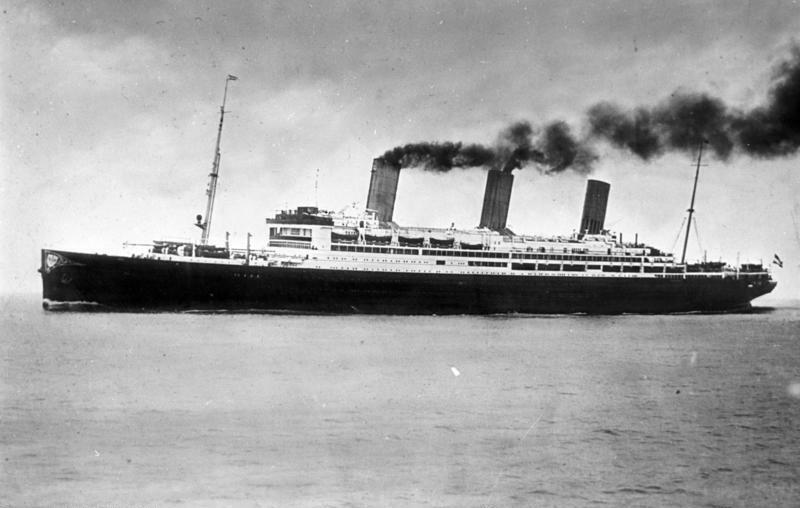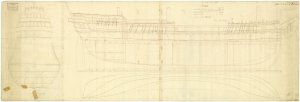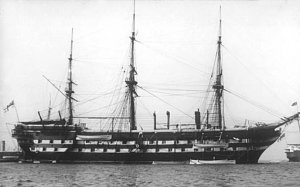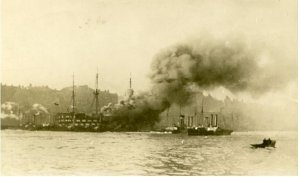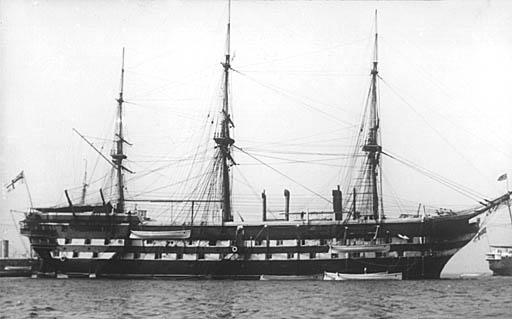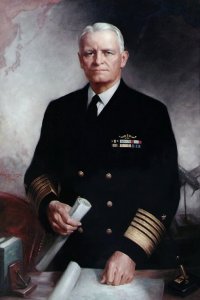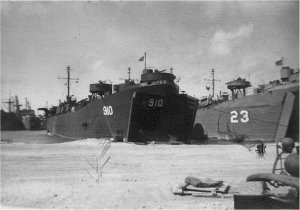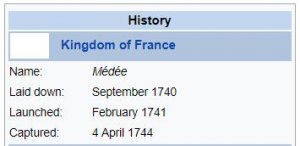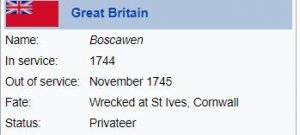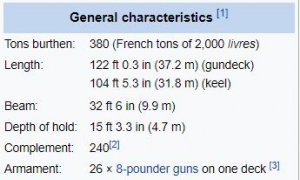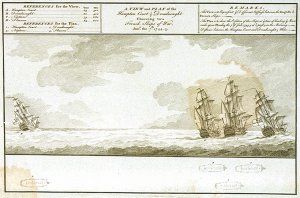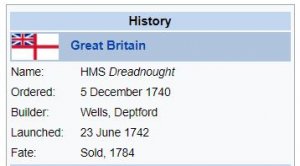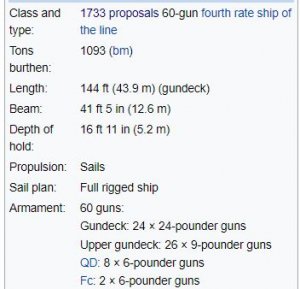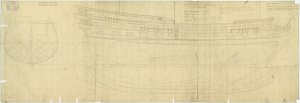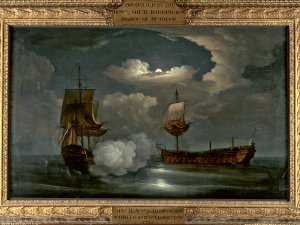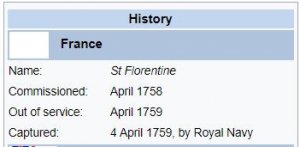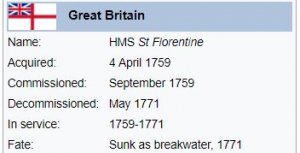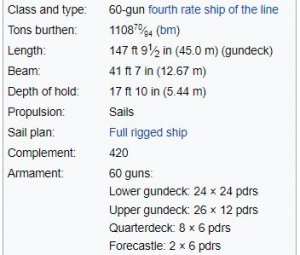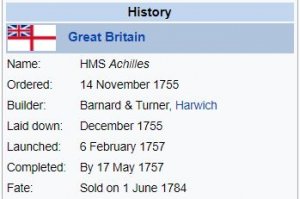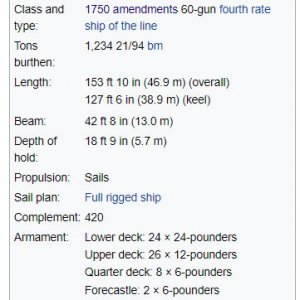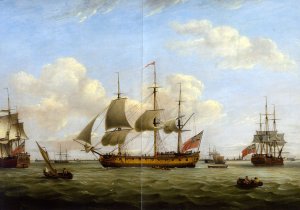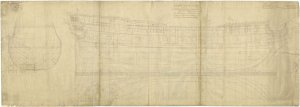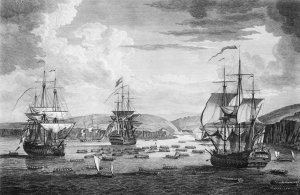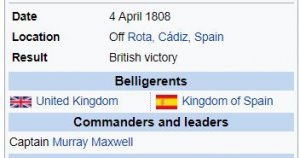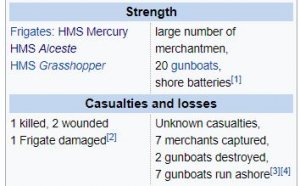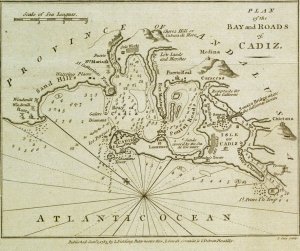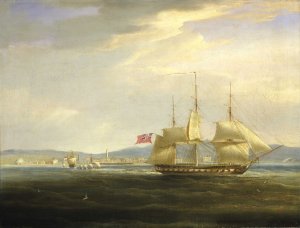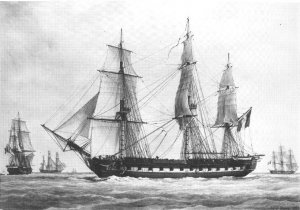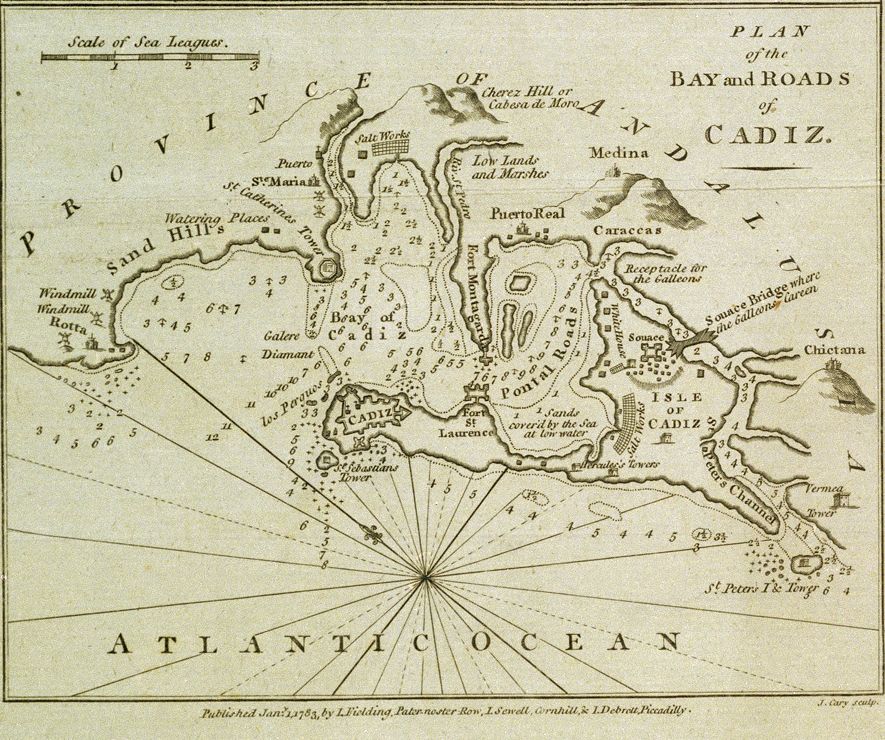Today in Naval History - Naval / Maritime Events in History
2 April 1844 – Launch of HMS Daring, a 12 gun-brig of the Royal Navy which became part of the Experimental Squadrons of both 1844 and 1845
HMS Daring was a 12 gun-brig of the Royal Navy which became part of the Experimental Squadrons of both 1844 and 1845, and later served in the West Indies. She was sold in 1864.
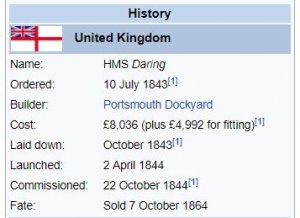
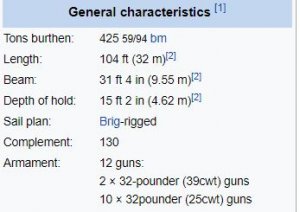
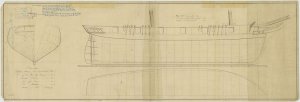
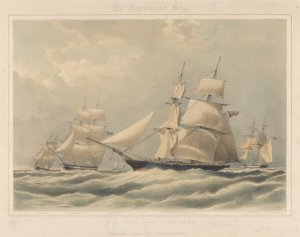
The Experimental Brigs. H.M. Brig Daring, 12 guns. Constructed by Mr Joseph White. (Shows H.M.S. Pantaloon, Espiegle, Cruizer and Osprey) (PAH0926)
Construction
Daring was designed by Mr. Thomas White of Cowes and built in Portsmouth Dockyard. She was launched on 2 April 1844 and commissioned on 22 October the same year.
History
The Experimental Squadron of 1844
From September 1844 until February 1847, she was commanded by Commander Henry James Matson, an outspoken abolitionist and hero of the Preventative Squadron. She was employed on the Home Station, where she formed part of the 1844 Experimental Brig Squadron. The Times stated:
She appeared to be a good sailer; the report of the comparative sailing qualities of the vessels making up the Experimental Brig Squadron reads:
The Experimental Squadron of 1845
Daring joined the two-deckers Albion, Vanguard, Superb, Rodney and Canopus on the third cruise of the 1845 Experimental Squadron, the only brig to do so. They were joined on 21 October by the wooden steam sloop HMS Rattler.[5] The Times reported that Daring could often not keep up with the larger ships:
Service on the North America and West Indies Station
From 1846 Daring served on the North America and West Indies Station. On 10 June 1846 she captured the Spanish slave schooners Rauret and Numa off Guano Point. The Mixed Court of Justice at the Havana found in favour of the owners and sentenced the ships to be restored to their masters on 15 July 1846.
The Wreck of USS Somers
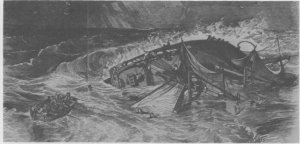
Loss of USS Somers off Vera Cruz
The United States government awarded medals to thirty-nine officers and crew of Daring, Endymion and Alarm in recognition of saving several officers and crew of the United States brig Somers in the harbour of Vera Cruz on 10 December 1846.
Daring apparently served the rest of her career on the North America and West Indies Station, returning to Britain at the end of each commission. Commander William Peel (a later winner of the VC and 3rd son of Sir Robert Peel, British Prime Minister) became her captain from February 1847 until October 1848. She refitted at Chatham in 1850 and from August 1852 was commanded by Commander Gerard John Napier. A memorial Inscription in the Port Royal Parish Church records that Lieutenant Smith, Midshipman Trevillian and 5 seamen of Daring were "drowned on June 23rd, 1853,- by the upsetting of one of her boats, - in the crossing of Tampico." She visited the Turks and Caicos Islands in 1855, and is recorded on a 20c stamp issued by the islands in August 1973.
Disposal
She was sold out of the service to Castle and Beech on 7 October 1864 and broken up at Charlton in March 1865. Her figurehead, a contemporary sailor staring straight ahead, is on display at the National Maritime Museum, Greenwich.
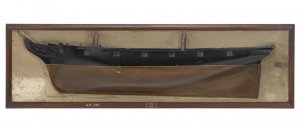
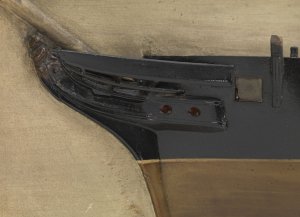
Scale: 1:48. A contemporary half block model of HMS Daring(1844), a 12 gun brig. The hull is carved from a solid block of wood(?) and painted a bronze colour below the waterline with black topsides above separated by a thin white line. Along the broadside are seven gunports let in and painted a light brown together with a cathead and channels. The clipper-shaped bow is fitted with headrails and a small half length bust figurehead, above which is mounted a stump bowsprit. The main deck is flush, fitted with two stump masts, and runs aft finishing with a small angled stern and quarter gallery with a rudder below fitted with gudgeons and pintles. The whole model is fitted on a rectangular wooden backboard which is painted a creamy white and surrounded by a stained moulded edging which is inscribed with "(3)" amidships below the keel. There is a detached plaque which is inscribed "200 Daring, 12 gun, 1844 scale 1/48 (1/4" to 1'). A brig built at Portsmouth, sold in 1865. Dimensions: - Gun deck 104ft Beam 31ft. 4 1/2 in".
https://en.wikipedia.org/wiki/HMS_Daring_(1844)
https://collections.rmg.co.uk/collections.html#!csearch;searchTerm=Daring_(1844
2 April 1844 – Launch of HMS Daring, a 12 gun-brig of the Royal Navy which became part of the Experimental Squadrons of both 1844 and 1845
HMS Daring was a 12 gun-brig of the Royal Navy which became part of the Experimental Squadrons of both 1844 and 1845, and later served in the West Indies. She was sold in 1864.




The Experimental Brigs. H.M. Brig Daring, 12 guns. Constructed by Mr Joseph White. (Shows H.M.S. Pantaloon, Espiegle, Cruizer and Osprey) (PAH0926)
Construction
Daring was designed by Mr. Thomas White of Cowes and built in Portsmouth Dockyard. She was launched on 2 April 1844 and commissioned on 22 October the same year.
History
The Experimental Squadron of 1844
From September 1844 until February 1847, she was commanded by Commander Henry James Matson, an outspoken abolitionist and hero of the Preventative Squadron. She was employed on the Home Station, where she formed part of the 1844 Experimental Brig Squadron. The Times stated:
| “ | We stated last week that the Daring entered her complement, and could have entered many more on the day she hoisted her pendant. This has been seized upon (as we expected it would be), as corroboratory of the statements made in certain daily and weekly "sources of information" upon the present efficient state of our naval force. It is, in fact, however, corroborative of no such allegation, but merely proves this, that the Daring and Waterwitch, being the first of the squadron commissioned, had a rush made to enter for them, and the former having a very excellent commander and a very "winning" look, was manned, and to spare, before her sister had half her complement on her books, and before the other vessel of the squadron had entered a single hand. | ” |
| — The Times, 23 September 1844[3] |
She appeared to be a good sailer; the report of the comparative sailing qualities of the vessels making up the Experimental Brig Squadron reads:
| “ | In the trial No. l, with the water smooth and a long swell, the Flying Fish had the greatest advantage; the Osprey and Daring slightly differing from each other, coming next; but in the trial No. 7, when the wind was similar, but where instead of smooth water there was a cross head sea, the Daring was the most weatherly, the Flying Fish and Espieglecoming after her, being followed, but at some distance, by the Mutine and Osprey. From the results of these two trials with the same weather, but with the sea coming in a different direction, it may safely be deduced that the Daring with a head sea is the superior vessel; and this is really remarkably confirmed by examining the details of the trial No. 7, where it appears that for three hours, when on the tack, with a following sea, there was comparatively but little difference between the Flying Fish, Espiegle, and Daring; but that afterwards, when the signal to tack had been made, and they were brought to bow the sea, the advantage was chiefly gained, which in two hours gave the Daring so great a superiority over the other two. | ” |
| — Capatin Corry RN, To the Secretary of the Admiralty, 9 December 1844 |
The Experimental Squadron of 1845
Daring joined the two-deckers Albion, Vanguard, Superb, Rodney and Canopus on the third cruise of the 1845 Experimental Squadron, the only brig to do so. They were joined on 21 October by the wooden steam sloop HMS Rattler.[5] The Times reported that Daring could often not keep up with the larger ships:
| “ | The Daring brig, 12, is, from her small tonnage and canvass, always left behind, except when on a wind under storm stay sails, in which case she drifts less, and is consequently ahead. | ” |
| — The Times, London, 13 October 1845[6] |
Service on the North America and West Indies Station
From 1846 Daring served on the North America and West Indies Station. On 10 June 1846 she captured the Spanish slave schooners Rauret and Numa off Guano Point. The Mixed Court of Justice at the Havana found in favour of the owners and sentenced the ships to be restored to their masters on 15 July 1846.
The Wreck of USS Somers

Loss of USS Somers off Vera Cruz
The United States government awarded medals to thirty-nine officers and crew of Daring, Endymion and Alarm in recognition of saving several officers and crew of the United States brig Somers in the harbour of Vera Cruz on 10 December 1846.
Daring apparently served the rest of her career on the North America and West Indies Station, returning to Britain at the end of each commission. Commander William Peel (a later winner of the VC and 3rd son of Sir Robert Peel, British Prime Minister) became her captain from February 1847 until October 1848. She refitted at Chatham in 1850 and from August 1852 was commanded by Commander Gerard John Napier. A memorial Inscription in the Port Royal Parish Church records that Lieutenant Smith, Midshipman Trevillian and 5 seamen of Daring were "drowned on June 23rd, 1853,- by the upsetting of one of her boats, - in the crossing of Tampico." She visited the Turks and Caicos Islands in 1855, and is recorded on a 20c stamp issued by the islands in August 1973.
Disposal
She was sold out of the service to Castle and Beech on 7 October 1864 and broken up at Charlton in March 1865. Her figurehead, a contemporary sailor staring straight ahead, is on display at the National Maritime Museum, Greenwich.


Scale: 1:48. A contemporary half block model of HMS Daring(1844), a 12 gun brig. The hull is carved from a solid block of wood(?) and painted a bronze colour below the waterline with black topsides above separated by a thin white line. Along the broadside are seven gunports let in and painted a light brown together with a cathead and channels. The clipper-shaped bow is fitted with headrails and a small half length bust figurehead, above which is mounted a stump bowsprit. The main deck is flush, fitted with two stump masts, and runs aft finishing with a small angled stern and quarter gallery with a rudder below fitted with gudgeons and pintles. The whole model is fitted on a rectangular wooden backboard which is painted a creamy white and surrounded by a stained moulded edging which is inscribed with "(3)" amidships below the keel. There is a detached plaque which is inscribed "200 Daring, 12 gun, 1844 scale 1/48 (1/4" to 1'). A brig built at Portsmouth, sold in 1865. Dimensions: - Gun deck 104ft Beam 31ft. 4 1/2 in".
https://en.wikipedia.org/wiki/HMS_Daring_(1844)
https://collections.rmg.co.uk/collections.html#!csearch;searchTerm=Daring_(1844


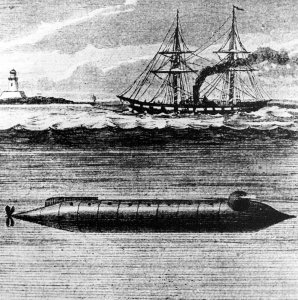

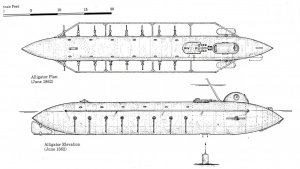
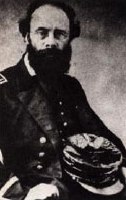
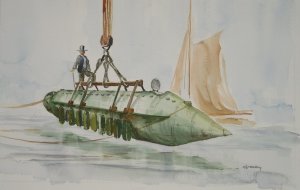

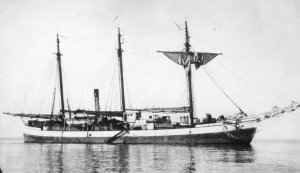
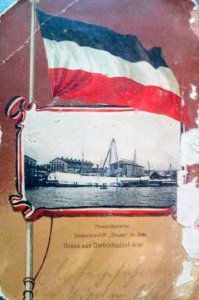
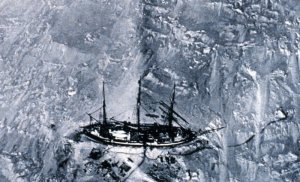
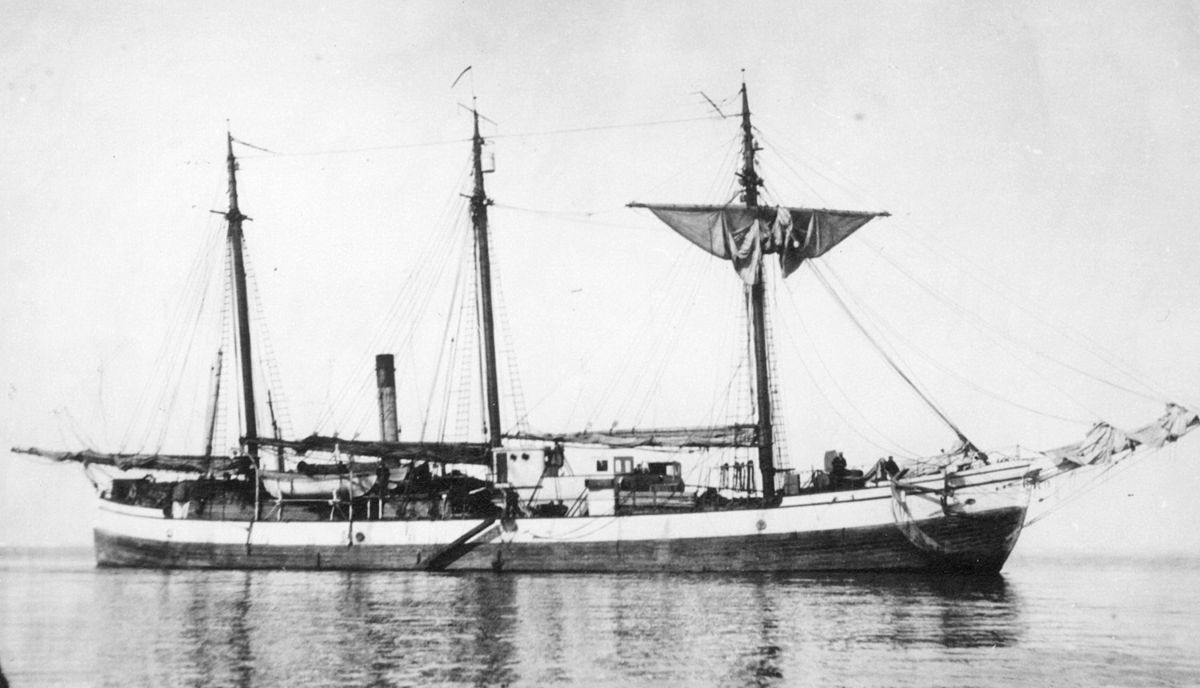
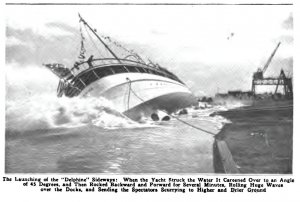
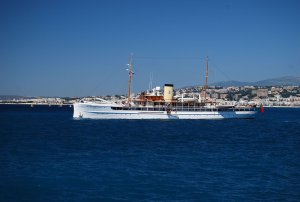





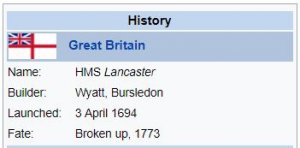
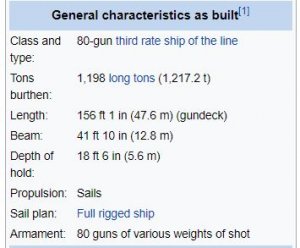
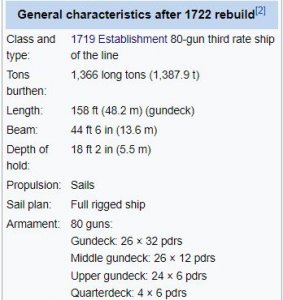
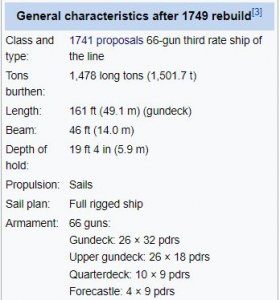
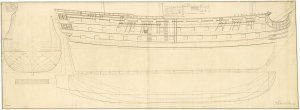
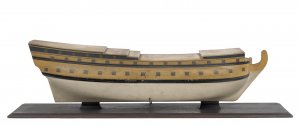
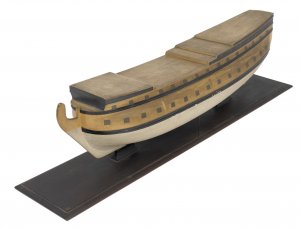
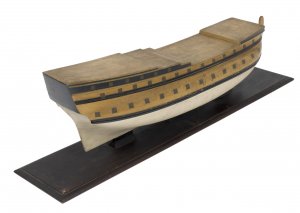

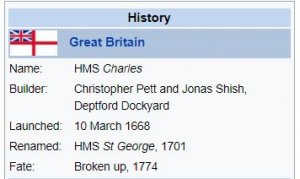
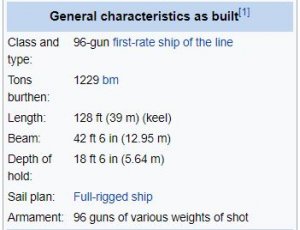
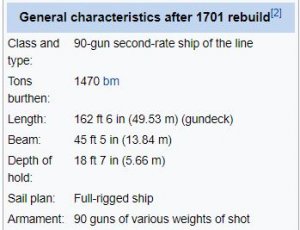
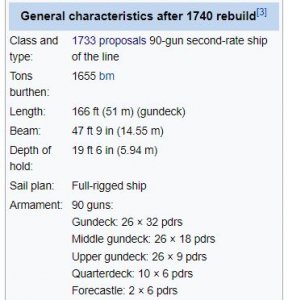
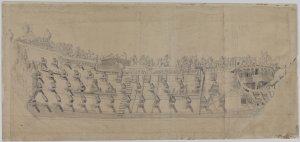
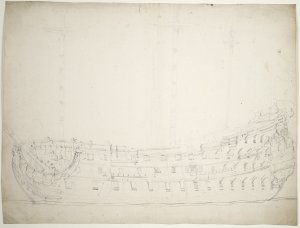
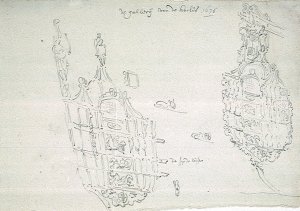
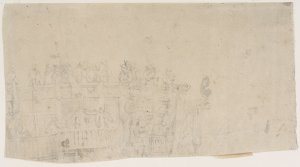
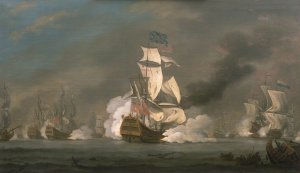

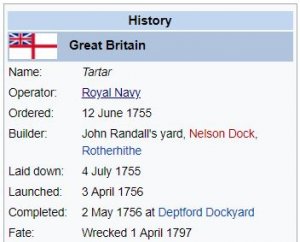
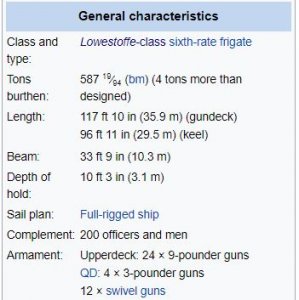

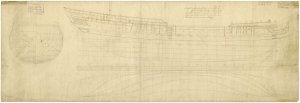
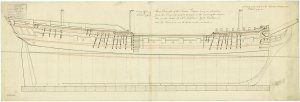
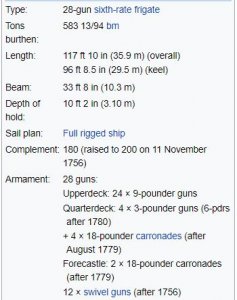
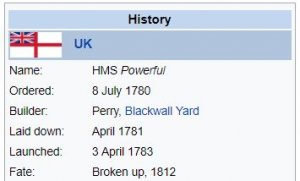
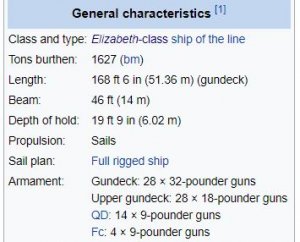

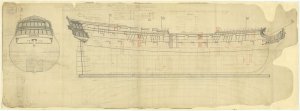
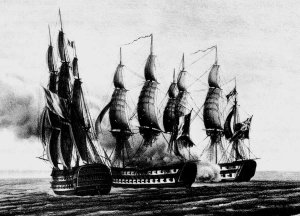

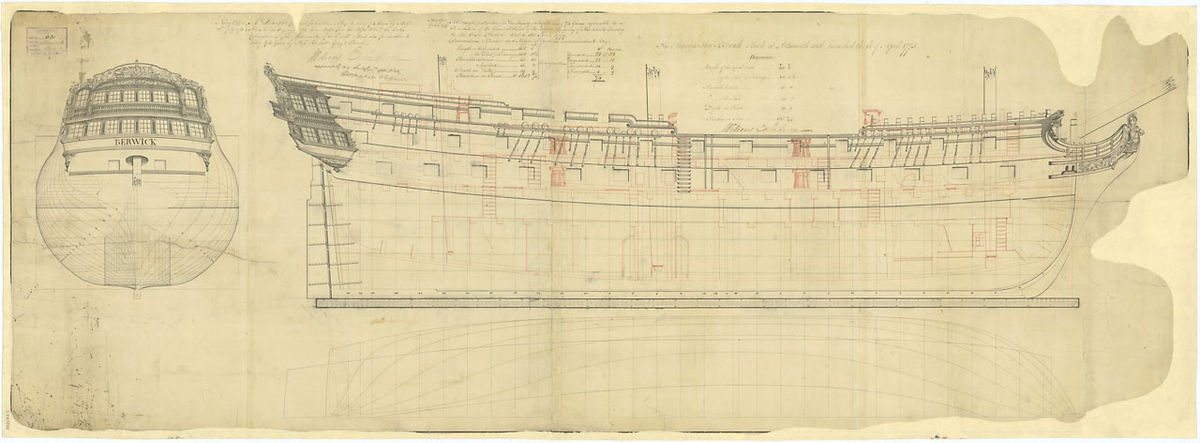


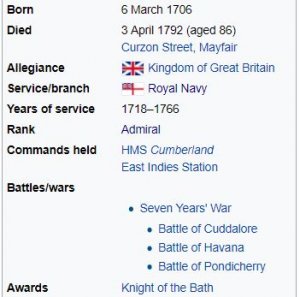
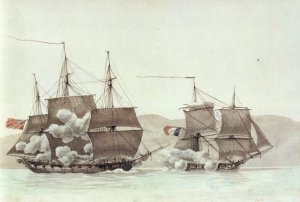
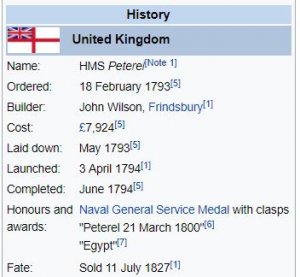
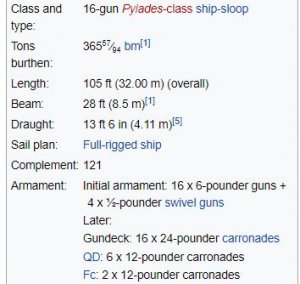
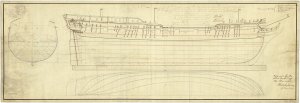
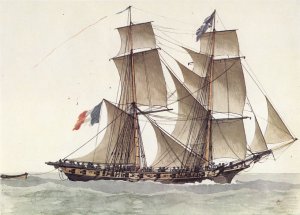
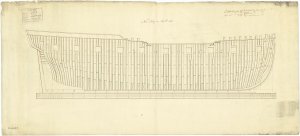
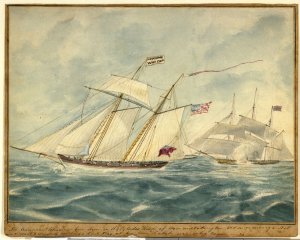

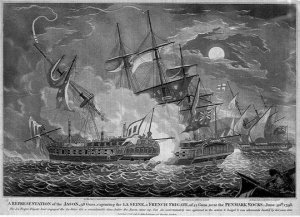
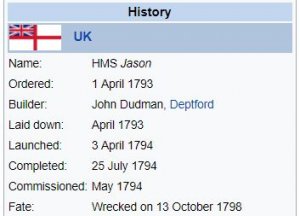
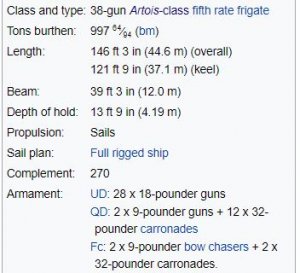
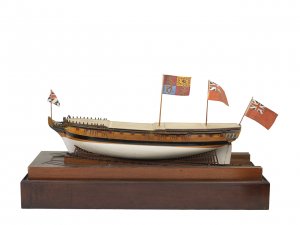
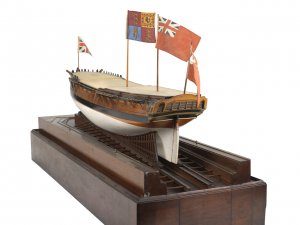
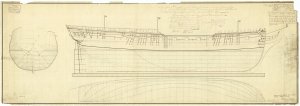

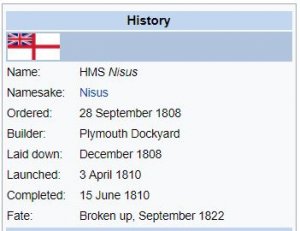
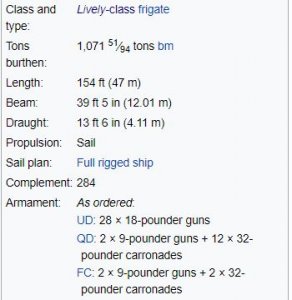
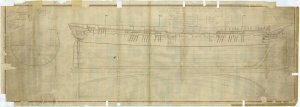
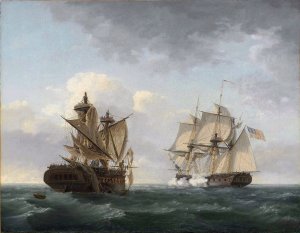
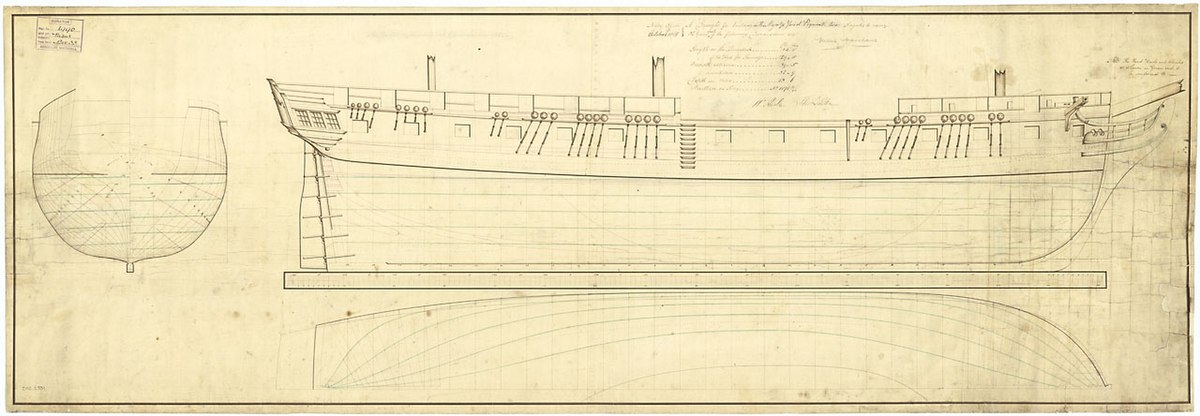
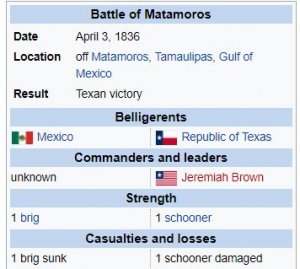
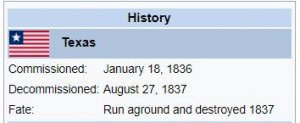
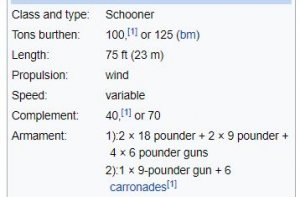
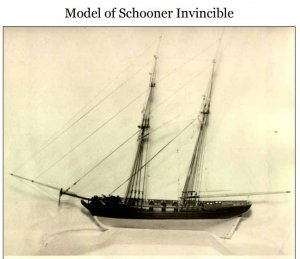
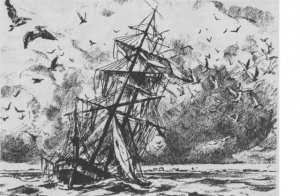
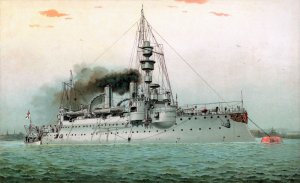
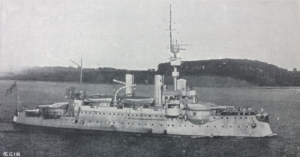
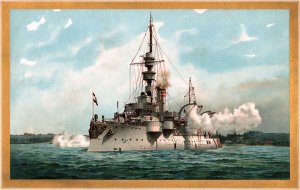
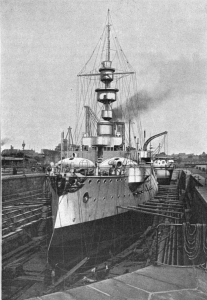
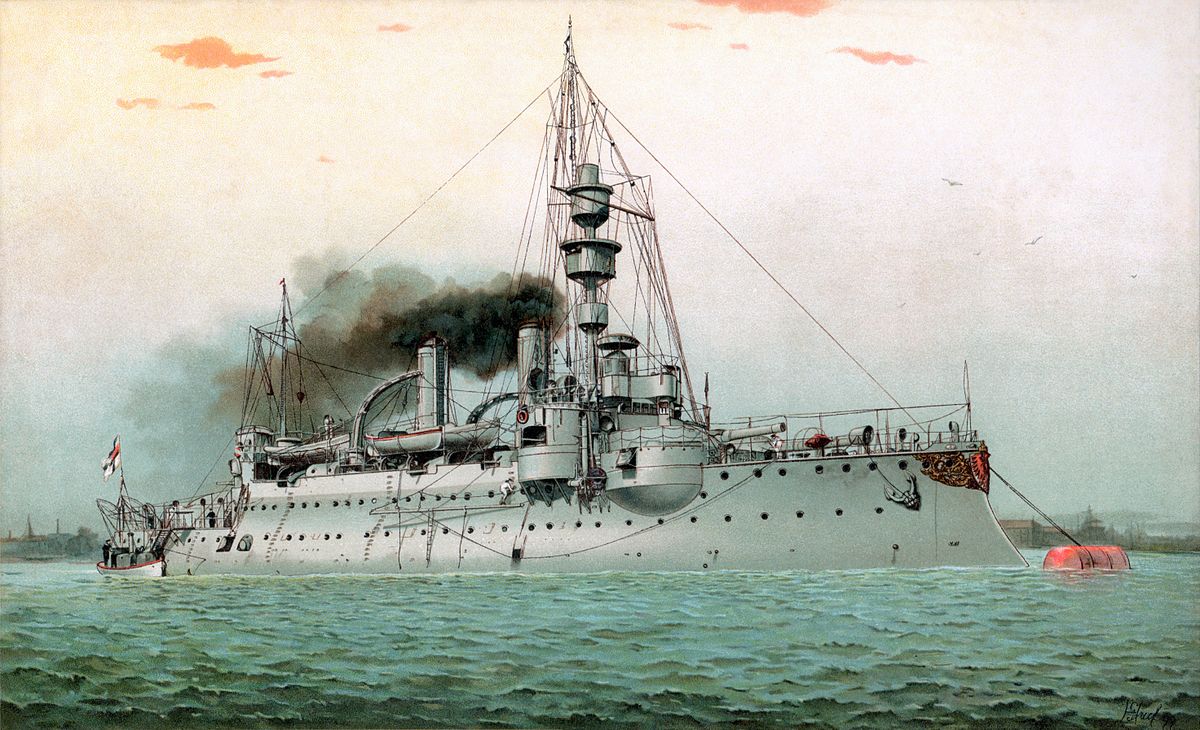
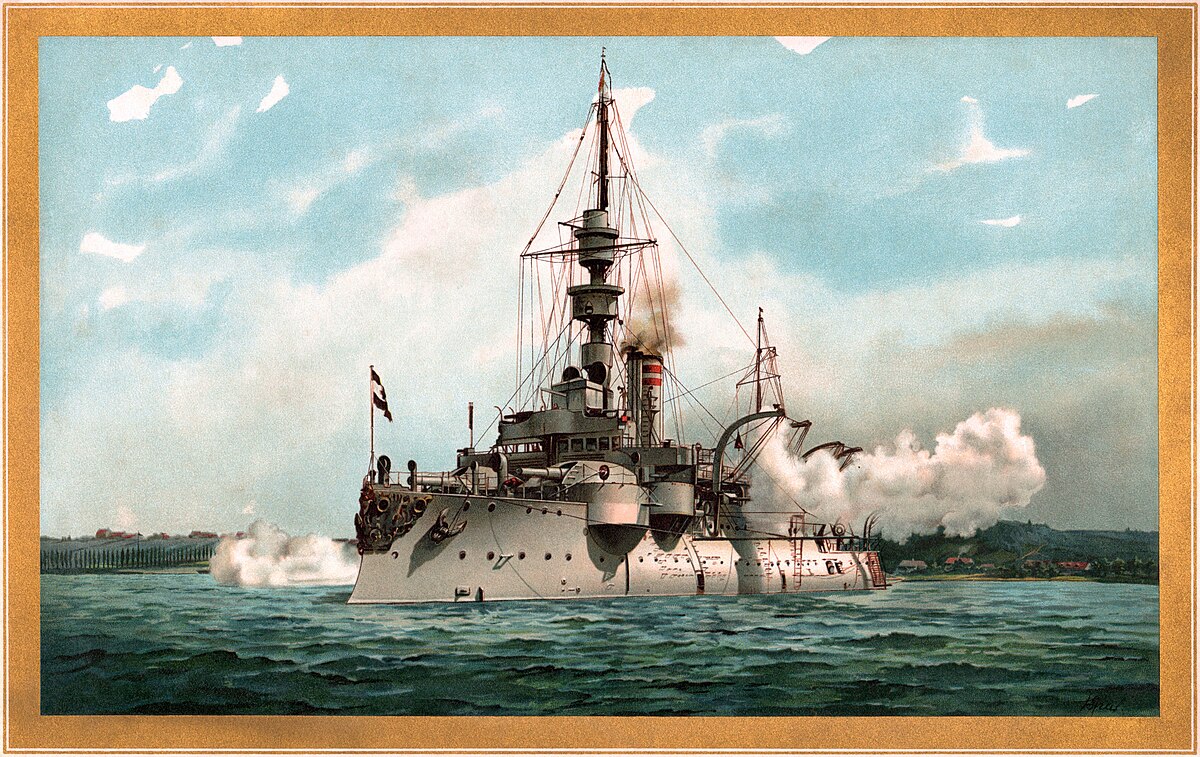
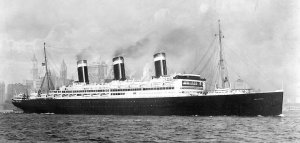
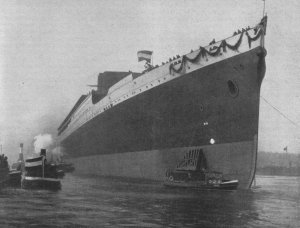
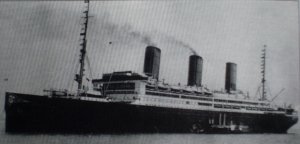
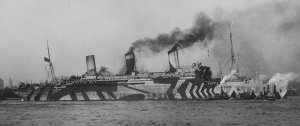
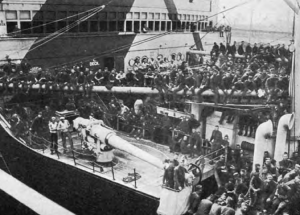
 Shipbuilding & Dry Dock Company
Shipbuilding & Dry Dock Company